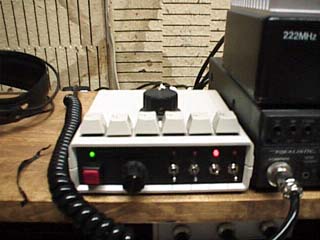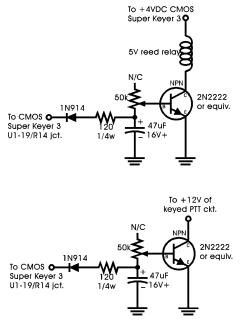
|
In 1998, I built a Super CMOS Keyer III for the VHF contest station at N5XU. The CMOS Super Keyer III is a partial kit sold by Idiom Press. The keyer internals were designed by KC0Q and N0II, as published in the August 1995 QST, p. 26.
The partial kit, as it comes from Idiom Press, contains a printed circuit board (PCB) and all the parts needed to populate it, including two integrated circuits (ICs). The builder needs to provide at least an enclosure, buttons, a knob, a potentiometer, wiring, a power source, and connectors. I designed mine to work with multiple radios, so I added additional parts, such as microswitches and LEDs.
One of the radios with which the keyer was intended to be used was an Yaesu FT-290R, a two meter all-mode radio that was used as an IF rig for a 1296 MHz transverter. The Yaesu FT-290R does not do even semi-break-in keying; in CW mode, you need to close a PTT line to switch the radio from receive to transmit. The Super CMOS Keyer III does not have a PTT output, but Dale Martin KG5U suggested a circuit that, when added to the Super CMOS Keyer III, would do the next best thing:
